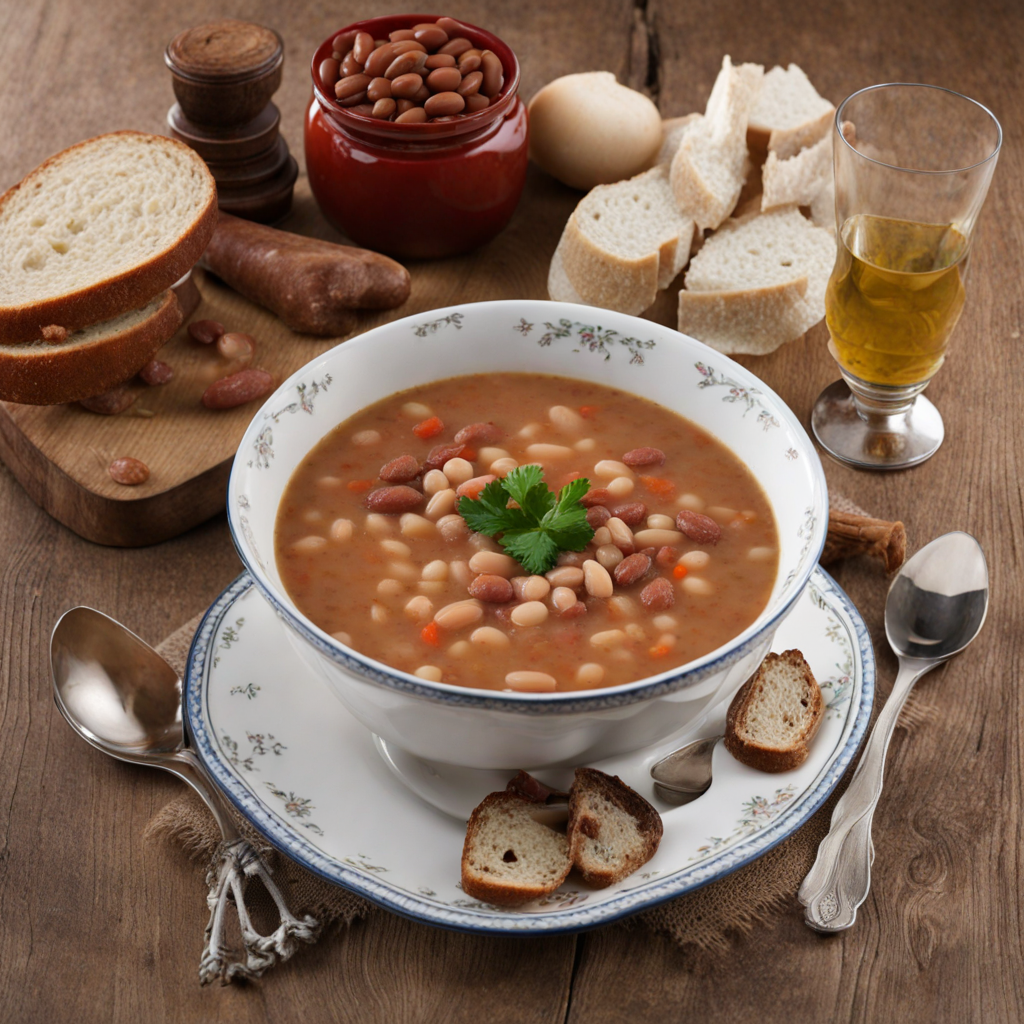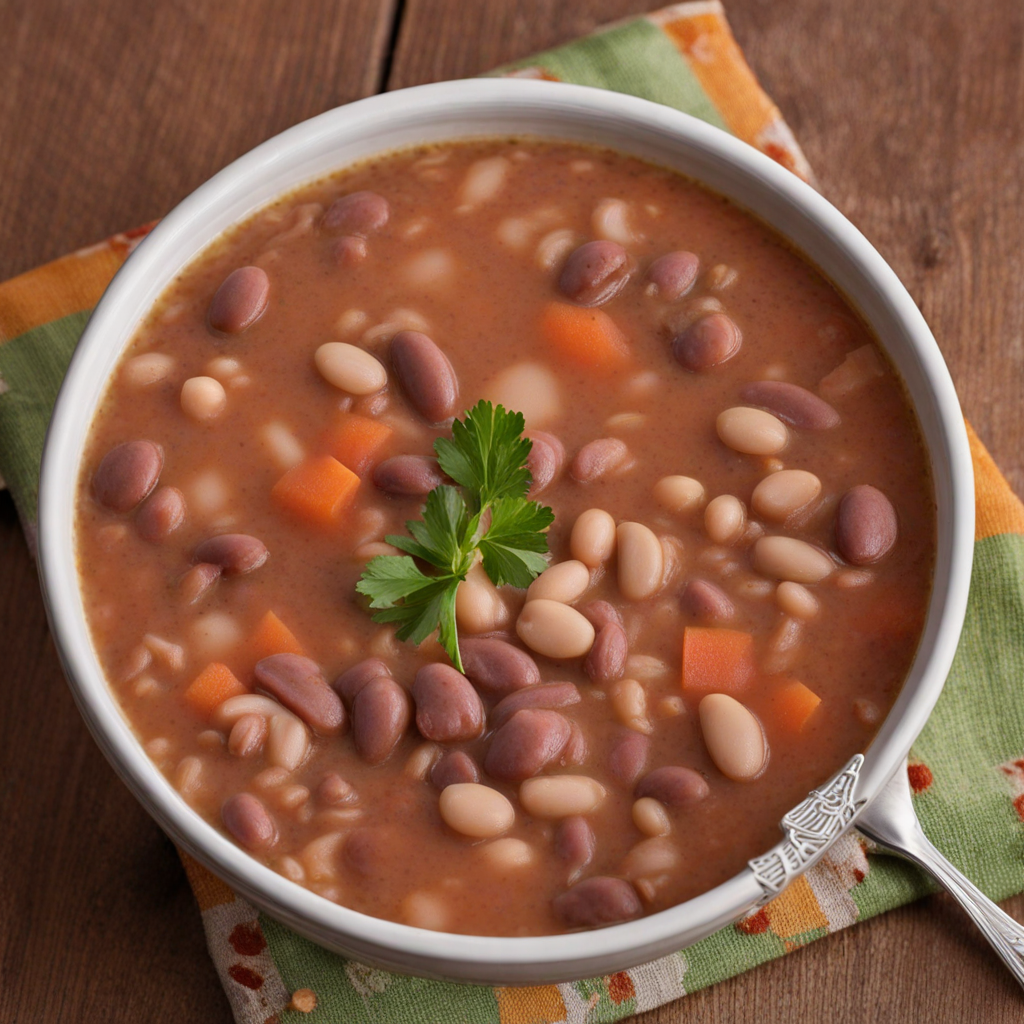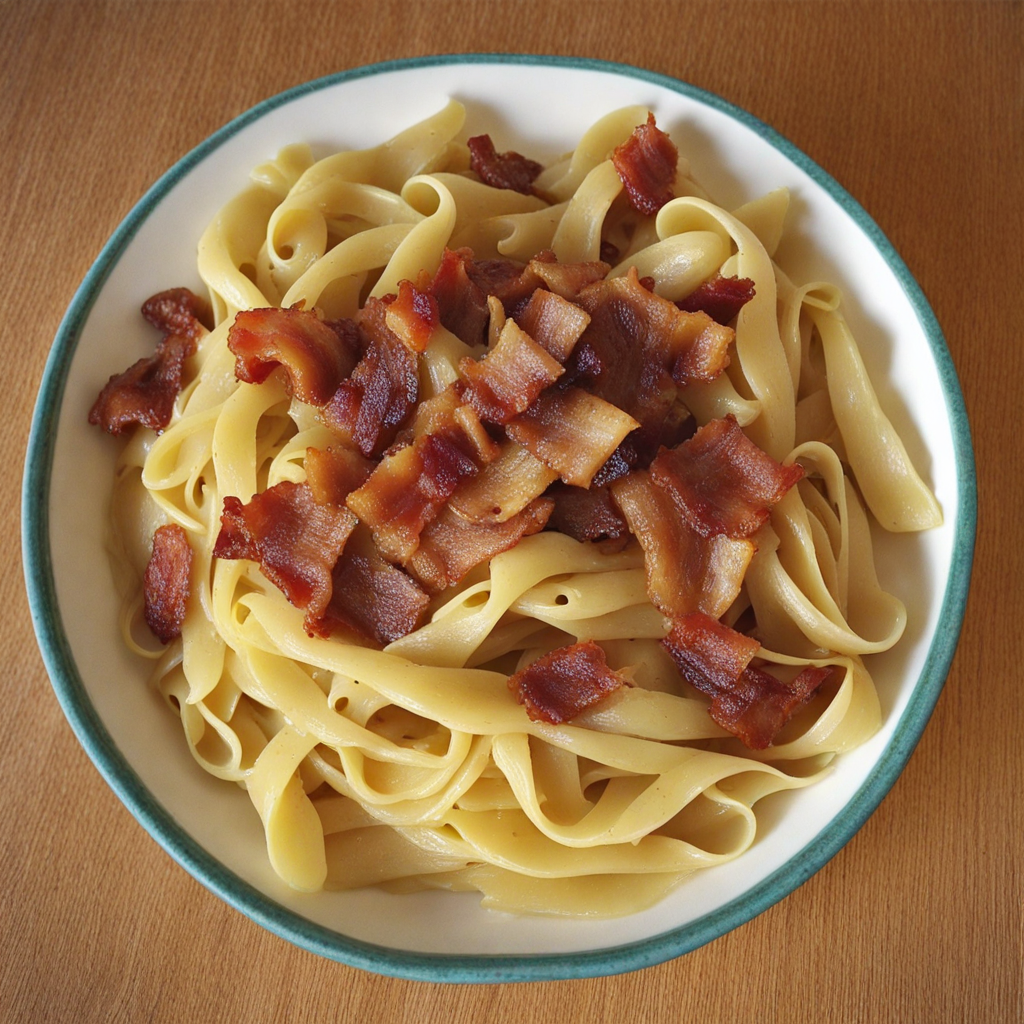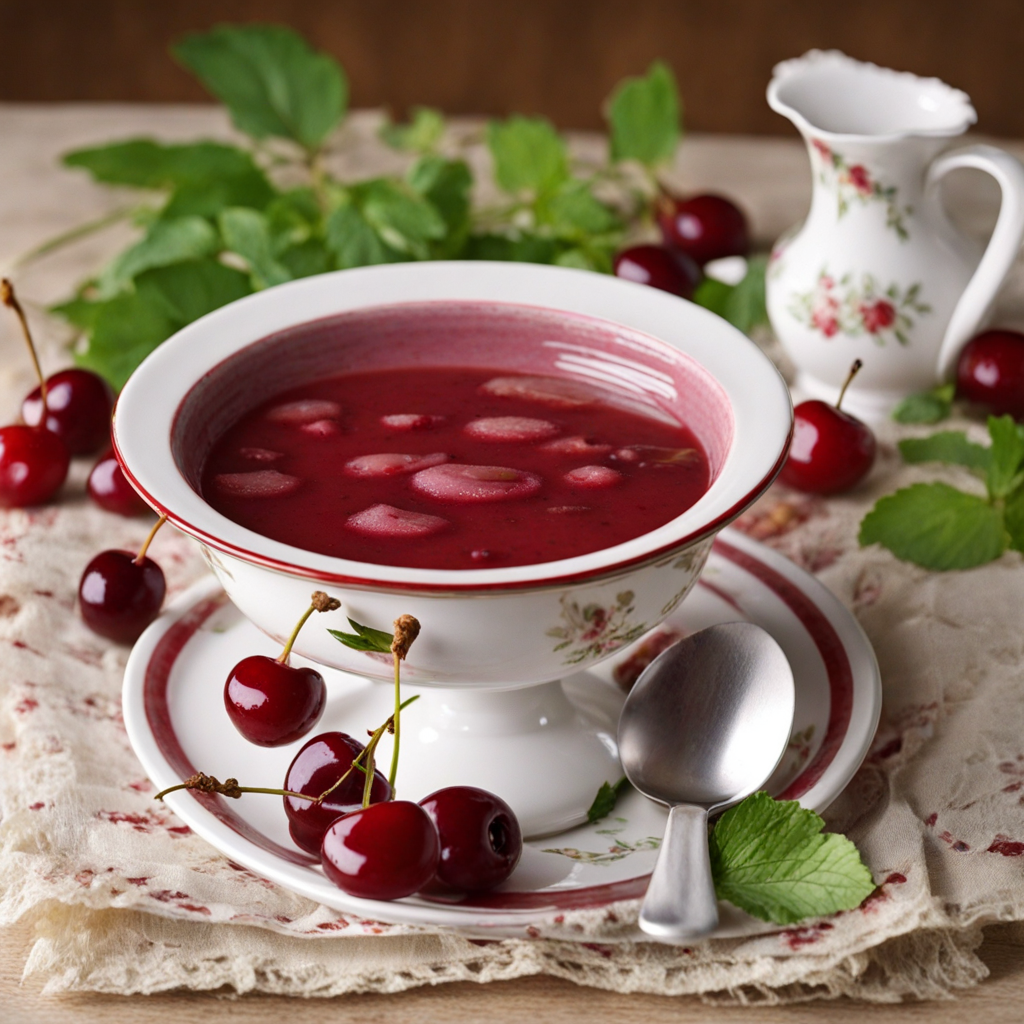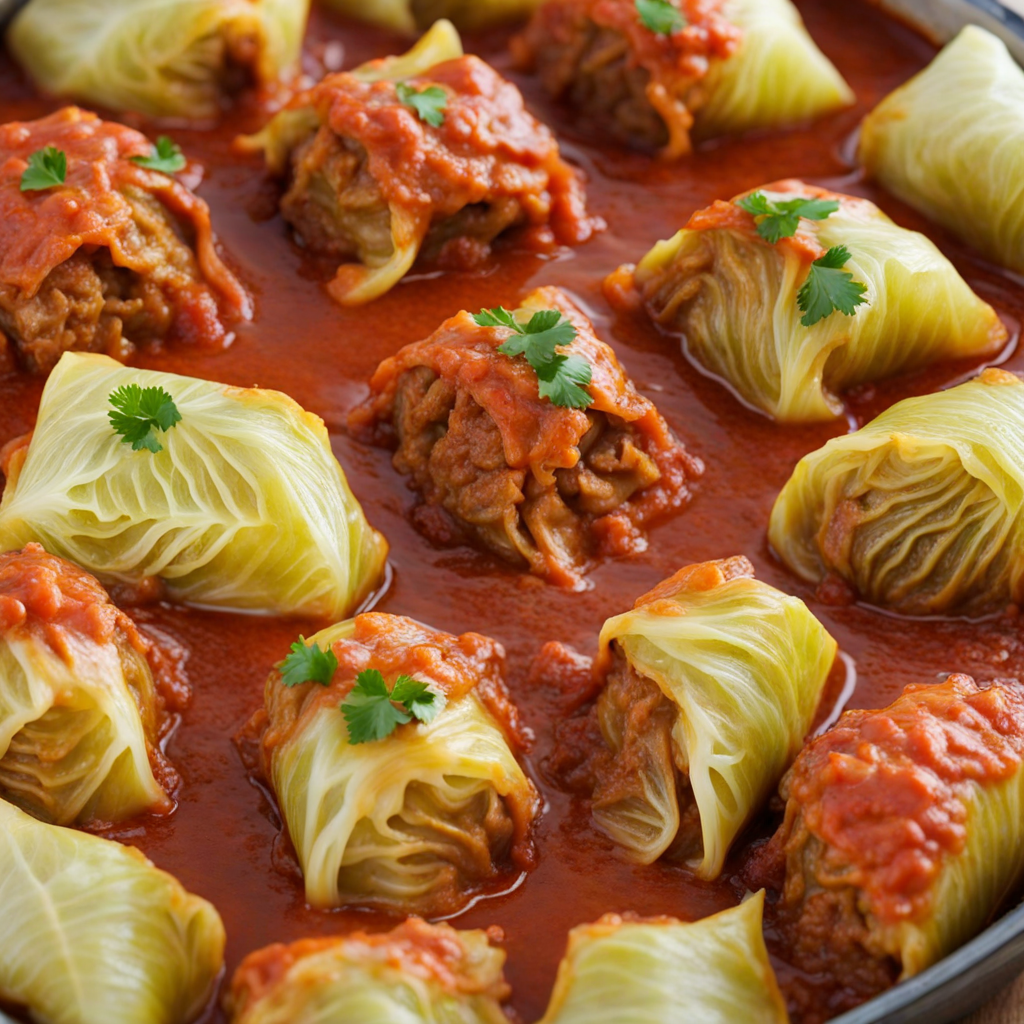Jókai Bean Soup
Jókai Bean Soup, a beloved dish from Hungary, is a delightful and hearty meal that showcases the rich culinary traditions of the region. This thick, flavorful soup is primarily made from white beans, which are slow-cooked to achieve a creamy texture. The beans are complemented by a medley of ingredients such as smoked pork, sausage, and a variety of vegetables, including carrots, bell peppers, and onions. The addition of paprika, a staple in Hungarian cuisine, infuses the soup with a warm, slightly smoky flavor, making each spoonful a comforting experience that warms the soul. The preparation of Jókai Bean Soup is a labor of love, often simmered for several hours to allow the flavors to meld beautifully. The slow cooking process not only enhances the taste but also ensures that the beans become incredibly tender. Each bite offers a delightful combination of textures, from the softness of the beans to the chewiness of the sausage. This soup is typically served with a sprinkle of fresh herbs, such as parsley, which adds a burst of freshness and color to the dish. What makes Jókai Bean Soup truly special is its versatility and the way it reflects the heartiness of Hungarian cuisine. While the traditional recipe features specific meats and vegetables, home cooks often add their own twist, incorporating seasonal ingredients or personal favorites. Whether enjoyed on a chilly day or served as a festive dish during gatherings, this soup is not just a meal; it is an experience that invites you to savor the rich flavors and wholesome ingredients that define Hungarian cooking.
How It Became This Dish
Jókai Bableves: A Culinary Journey Through Hungarian History Hungary's culinary landscape is rich and diverse, shaped by its geographical position at the crossroads of Europe and its complex history. Among its many cherished dishes, Jókai bableves stands out as a symbol of Hungarian identity and tradition. Named after the renowned 19th-century Hungarian author Mór Jókai, this hearty bean soup encapsulates the essence of Hungarian cuisine through its flavors, ingredients, and cultural significance. Origins of Jókai Bableves The origin of Jókai bableves is steeped in the folklore of Hungarian gastronomy. While the precise date of its inception is difficult to pinpoint, the dish gained prominence during the 19th century, coinciding with the rise of the Hungarian national identity. Mór Jókai, a prominent figure in the Hungarian literary scene, is credited with popularizing this dish through his novel "A kőszívű ember fiai" (The Sons of the Stone-Hearted Man), published in 1869. In the novel, Jókai describes a rich, flavorful bean soup, evoking the warmth of home and the comfort of family gatherings. The soup quickly became associated with Jókai himself, and thus the name "Jókai bableves" was born. Beans have been a staple in Hungarian cuisine for centuries, introduced to the region during the time of the Ottoman Empire. The dish reflects the agricultural practices of rural Hungary, where beans, particularly the kidney and white varieties, thrived in the fertile soils. Traditionally, beans were considered a peasant food, affordable and nutritious, making them an ideal base for a filling soup. Over time, Jókai bableves evolved from a simple rustic dish to a celebrated part of Hungarian culinary heritage. Cultural Significance Jókai bableves is more than just a meal; it is a cultural emblem that embodies the spirit of Hungarian hospitality and family traditions. The dish is often associated with gatherings, celebrations, and festive occasions. In Hungary, serving a hearty bowl of Jókai bableves is a gesture of warmth and generosity, reflecting the importance of sharing food as a means of bringing people together. The soup is especially popular during the colder months, providing warmth and comfort to those who partake in it. It is often enjoyed during family gatherings, holidays, and communal feasts, reinforcing the bonds of kinship and friendship. Furthermore, the act of preparing Jókai bableves is an opportunity for families to come together, with generations collaborating in the kitchen to create a dish that is rich in history and flavor. Ingredients and Preparation At its core, Jókai bableves is a bean soup, but its richness comes from the variety of ingredients that complement the beans. The primary components typically include dried beans, smoked meat (often smoked pork or sausage), vegetables, and spices. The combination of these ingredients creates a deep, savory flavor profile that is beloved by many. The preparation of Jókai bableves requires time and care. Dried beans are soaked overnight to soften them, a practice that underscores the dish's rustic roots. The next day, they are boiled until tender. Simultaneously, diced smoked meat is sautéed with onions, carrots, and bell peppers, infusing the dish with aromatic depth. Once the meat is cooked, the soaked beans are added along with water or broth, allowing the flavors to meld together. Spices play a crucial role in the seasoning of Jókai bableves. Commonly used spices include paprika, a staple in Hungarian cuisine that adds both color and a distinctive flavor. A pinch of black pepper and bay leaves further enhance the soup, while fresh herbs like parsley may be sprinkled on top just before serving for a burst of freshness. While the traditional recipe remains beloved, variations and adaptations of Jókai bableves have emerged over time. Some cooks incorporate additional ingredients, such as potatoes or tomatoes, to further enrich the soup, while others may adjust the seasoning to suit personal preferences. This adaptability reflects the dynamic nature of Hungarian cuisine, which continually evolves while honoring its roots. Development Over Time As Hungary transitioned through various historical periods—shaped by wars, political changes, and cultural shifts—so too did its culinary traditions. The 20th century brought significant changes to Hungarian food culture, with the impact of World War I, World War II, and the subsequent Soviet influence. Despite these challenges, Jókai bableves remained a beloved dish, symbolizing resilience and continuity in the face of adversity. In the post-war era, Hungary experienced a culinary renaissance, with chefs and home cooks alike embracing traditional recipes while also experimenting with new techniques and ingredients. The rise of international travel and globalization introduced new flavors to Hungarian cuisine, leading to a fusion of traditional and modern culinary practices. Jókai bableves found its place in restaurants across the country, often served alongside contemporary dishes that showcased Hungary's diverse culinary heritage. Today, Jókai bableves is celebrated not only in homes but also in restaurants, cultural festivals, and culinary competitions. It has become a culinary ambassador for Hungary, gaining recognition beyond its borders. Food enthusiasts and chefs honor the traditional preparation methods while also exploring creative interpretations of the dish, ensuring that its legacy continues to thrive. Conclusion Jókai bableves is more than just a dish; it is a reflection of Hungary's rich cultural tapestry, a symbol of familial love, and a testament to the nation's agricultural heritage. From its humble origins to its status as a beloved national dish, Jókai bableves embodies the heart and soul of Hungarian cuisine. As it continues to evolve and adapt to contemporary tastes, this hearty bean soup serves as a reminder of the importance of tradition, community, and the simple pleasures of sharing a meal with loved ones. Whether enjoyed during a festive gathering or a quiet evening at home, Jókai bableves remains a cherished part of Hungary's culinary identity, inviting everyone to partake in its warmth and flavor.
You may like
Discover local flavors from Hungary


